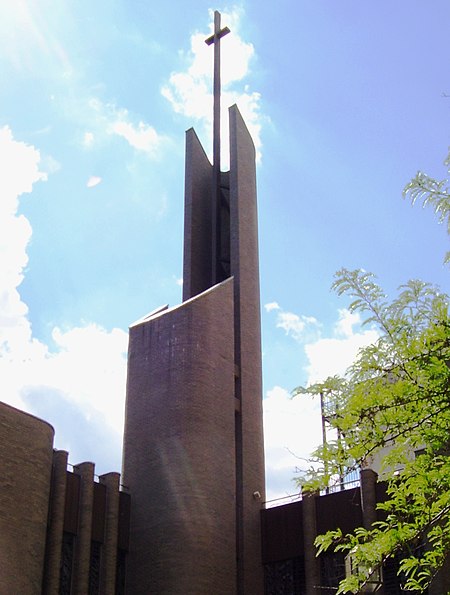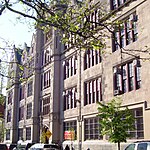Church of the Epiphany (Roman Catholic, Manhattan)
1868 establishments in New York (state)20th-century Roman Catholic church buildings in the United StatesBuilding fires in New York CityBurned religious buildings and structures in the United StatesCatholic K–8 schools in the United States ... and 10 more
Congregation of Christian Brothers schools in the United StatesGramercy ParkModernist architecture in New York CityPrivate schools in ManhattanReligious organizations established in 1868Roman Catholic churches completed in 1967Roman Catholic churches in ManhattanRoman Catholic elementary schools in ManhattanSchool buildings completed in 1888Sisters of Charity schools

The Church of the Epiphany is a parish church of the Roman Catholic Archdiocese of New York, located at 373 Second Avenue at the corner of East 22nd Street, in the Gramercy Park neighborhood of Manhattan, New York City. It operates a co-educational PreK–8 Catholic school and Religious Education program.
Excerpt from the Wikipedia article Church of the Epiphany (Roman Catholic, Manhattan) (License: CC BY-SA 3.0, Authors, Images).Church of the Epiphany (Roman Catholic, Manhattan)
East 21st Street, New York Manhattan
Geographical coordinates (GPS) Address Website External links Nearby Places Show on map
Geographical coordinates (GPS)
| Latitude | Longitude |
|---|---|
| N 40.737099 ° | E -73.981926 ° |
Address
Church of the Epiphany
East 21st Street 239
10010 New York, Manhattan
New York, United States
Open on Google Maps





